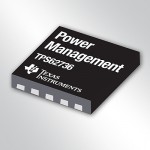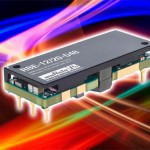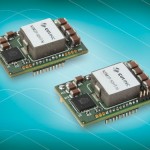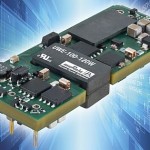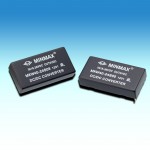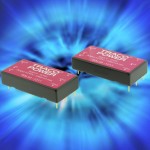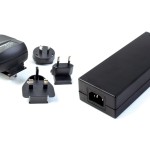Answering the question, “How low can you go with power?” Texas Instruments Incorporated (TI) (NASDAQ: TXN) introduces the industry’s lowest power DC/DC step-down converter, which increases the amount of harvested energy an end application can use as much as 70 percent over alternative devices. The ultra-low power circuit enables battery-free power to applications, such as […]
DC-DC
Murata Power Solutions Announces: Eighth-brick 240 Watt DC-DC Converter
Murata Power Solutions announced the RBE series of fully isolated DC-DC converters, designed for a broad range of applications including 12 VDC intermediate bus architectures or distributed power-based applications used in servers, wireless base-stations, data storage, telecom switches and networking equipment. The RBE-12/20-D48 model will deliver a regulated 12V output @ 240 Watts from a […]
CUI Introduces the No-Bus Self Compensating Digital Point-of-Load Modules
TUALATIN, Ore. —CUI Inc releases the industry’s first self-compensating No-Bus digital point of load dc-dc module family. The modules are specifically designed for customers who value the efficiency and compensation advantages inherent in digital power but do not want to incorporate digital bus communication in their systems. The NSM2P series will allow customers to access many of […]
Murata’s 100-to-120-W dc-dc converters for embedded computing
The UWE series is a 100-to-120-W, eighth-brick, DC-DC converter for embedded computing applications, instrumentation subsystems, and military embedded systems. The open frame isolated DOSA-compatible power electronics devices provide an efficiency of typically 91.5 percent, which requires no forced-air cooling in most applications. This series uses industry-standard through-hole package, and measures 2.3 x 0.9 x 0.39 […]
MKW40 Series of 40 Watt DC/DC Power Modules
The Minmax MKW40 Series is a 40 W dc/dc converter in a compact 1in. x 2 in. shielded metal case with an optional heatsink. This series is EMC compliant to EN55022 Class A and has international safety approvals, making it ideally suited for worldwide use in space critical applications in a variety of equipment, including […]
TEN 50 Highest Power Density 50 Watt DC/DC Converter
The TEN 50 Series of high performance 50 W dc/dc converters from Power Sources Unlimited, Inc. converts into a 1in. x 2 in. x 0.4 in. industry standard package size. This series models feature a high efficiency of up to 92%. The low thermal dissipation and the use of highest-grade components allow for an operating […]
Sitop PSU100D Power Supply Eliminates Rail Mounting
The wall-mounted, single-phase, Sitop PSU100D switched-mode power supply is screwed-mounted, which eliminates the need for traditional rail mounting while affordably meeting the basic power supply requirements. Ideally suited for apparatuses and machines, it features a rugged, low profile, aluminum casing with IP20 degree of protection that requires little space, while enhancing mounting flexibility. A wide […]
CUI’s Medical External Power Supplies
The high efficiency, medical external power supplies, by CUI, offers both multi-blade wall adapters and desktop adapters. All units meet Level V efficiencies and come with UL/cUL and TUV 60601-1 safety certifications. The flexible EMMA multi-blade adapter series is designed for global use and comes standard with interchangeable blades for operation in North America, Europe, […]
SolarSpec™ Panel-Mount DC Connectors and Terminals are Fully Certified
SolarSpec™ panel-mount DC connectors are now fully certified to applicable IEC standards and endorsed by the TUV and UL approval agencies. With an internal locking and touch-proof design for superior safety, it features a retention nut mechanism for simple assembly to the panel and provides secure and reliable cable connection for internal inverter wiring. Production […]
High Power Density DC/DC Converter Modules With 4:1 Input Voltage Range
The Traco Power TEP 150WI series with input filter module is now available on standard assembly, together with the TEP 150WI dc/dc converter module. Both are designed to meet high EMC demands, like conducted noise, in accordance to EN55022 class B and increased burst and surge immunity without external components. The assembly makes designing very […]

